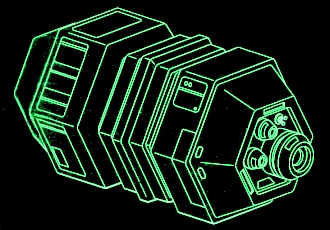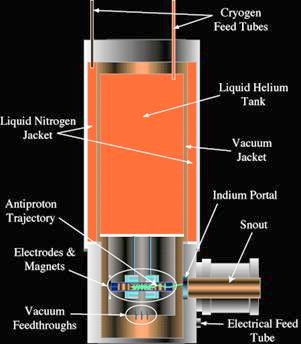
Antimatter annihilates with regular matter on contact, so containment of antimatter is a challenge. In Star Trek, this problem is solved by the use of antimatter containment pods - special magnetized self-contained storage units which contain un-reacted antimatter fuel for a starship. According to The Star Trek: The Next Generation Technical Manual, antimatter pods use an antimatter containment field to isolate the fuel within from contact with normal matter which would cause it to be annihilated - with catastrophic results. In the Star Trek: The Next Generation episode "Contagion", the USS Yamato's antimatter containment field in their antimatter pods failed, causing the destruction of the ship.

Antimatter containment pod, as
depicted in the The Star Trek: The Next Generation
Technical Manual
In real science, anti-protons can be stored a Penning trap - a device which uses a combination of low temperatures and electrical and magnetic fields to hold the charged anti-particles in suspension from normal matter. A cloud of antiprotons can be kept cold and quiet by liquid nitrogen and helium and a stable magnetic field. However, these Penning traps are heavy, hard to manage and house only a small amount of antimatter. NASA is working on HiPAT (High Performance Antiproton Trap), which aims at improving the situation still more through the use of strong magnetic fields and extreme cooling. A device being used by the Max-Planck-Institute of Quantum Optics is using radio frequency waves rather than magnetic fields to store anti-protons. Called a ’superconducting radiofrequency quadrupole trap’, it has the potential to offer antimatter storage in a device the size of an office wastebasket.
A device that uses a combination of low temperatures and electromagnetic fields to store antimatter. While Penning traps can only store incredibly small quantities, they will help in developing the technologies needed for advanced propulsion concepts. The photo on the left shows a Penning trap at the Laboratory for Energetic Particle Science at Pennsylvania State University. The diagram on the right is a schematic of the interior of the device.

